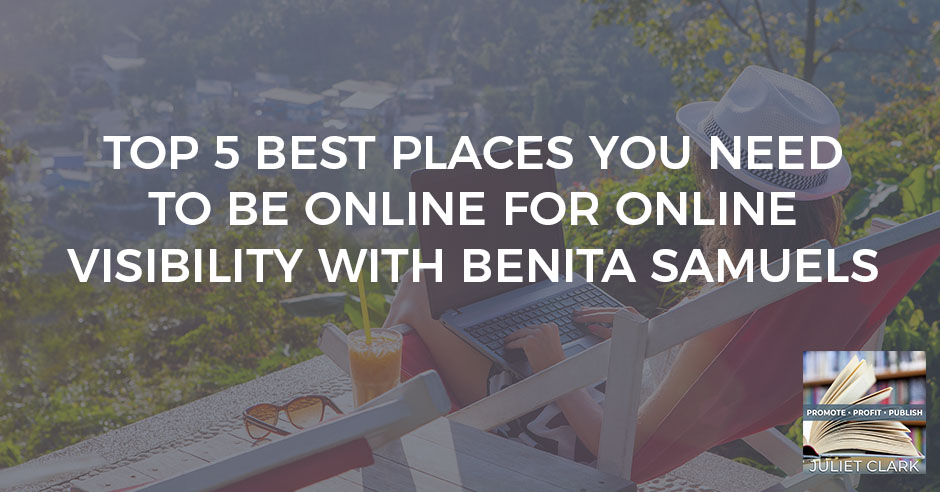
In this day and age, if you’re not online, you’re not attracting customers. Online visibility is key. This is how business works today, especially with the pandemic. You need to have an online footprint. If Google doesn’t recognize your business, you’re going to struggle out there. That is a fact. Come and join your host, Juliet Clark, and her guest Benita Samuels on the top five places you need to be online. Benita is the founder of Visibility Solutions Group. She believes that business is all about building relationships, and you need to do that wherever you are. This is where the internet comes in and plays a big role. Discover where you need to be in this cyberspace.
—
Listen to the podcast here
Top 5 Best Places You Need To Be Online For Online Visibility With Benita Samuels
We have a great guest for those of you who are looking to find your visibility online with digital and social media. Before we go, I want to remind you to run over to YouTube and follow us. Subscribe on @SuperBrandPublishing. You can see all of these people live. If you’re a video person, you can go over there and see this on video. Also, don’t forget to go over and take the Promote Profit Publish Quiz. You can find it at www.PromoteProfitPublishQuiz.com. Find out if you are ready to publish. Most of you need to build an audience. Most of you have a lot of things you need to do before you publish that book and get it out to the world. Don’t wait until the last minute because it takes time.
Our guest is Benita Samuels. She’s the Founder of Visibility Solutions Group. Benita promotes and speaks about the importance of being digitally visible. An early adopter and practitioner of digital and social media for business strategy, Benita brings a unique perspective to her audience, having audiences, having adopted new media when it was new. She reveals professional insights around the how, where, and why of increasing your online visibility, including maximizing the power of LinkedIn as a vital tool for connection. Welcome, Benita. I’m excited to have you here.
Thank you, Juliet. I’m excited to be here, too.
Benita looks good. She wanted me to mention that before we started. She’s very proud of the way she looks. She put on lipstick and painted her office. She’s a longtime client of mine. This is big news that she’s redone her office.
It’s amazing how it refreshes you, especially if you’re a work-at-home individual, because it’s surprising. I’ve walked into my office and it went from this kind of weird color to this blue. I feel so much more alive. I feel like I’m somewhere else and it gives me much more energy. If you haven’t updated your office, you should.
That’s funny you said that because I used to have my production boards behind me for publishing a while back. Nina, a video expert, said, “With COVID, your office is your new space and it needs to look professional.” We redid my background because of that. I feel much better about it. It gives you more energy. It feels a little lighter and better, too. I’m sure it does for the people on camera, too. We’re going to talk about the top five places where you need to be online and why.
Share on Google. Google loves Google.
It’s shocking how many people don’t realize the value of these elements online that, generally speaking, it’s not a paid platform. You own or have access to these places and all of them ladder up to your search presence and your visibility. Truthfully, people have to know you exist if they’re going to read your book, how are you to do business, and interview on a program. Before COVID and even more so during COVID, you don’t attract people the same way if you’re not online.
I want to address something that is a big fallacy that hit with COVID. You’re about to tell us about five ways to be online, where you need to be and when people were hiring us during COVID, and we do something a little bit different with the quiz. It’s not what you do on a much smaller scale. They expected this to be instant gratification, “I’m going to be on next week. Everybody will find me,” thing. Bust that out for them, please.
Let’s start with everything is built on relationships. People do business with people. They don’t do business with companies. Relationships take time to build. If you’re in a transactional business and people are searching for you, maybe you’ll start to see a little bit of benefit, but the reality is anything you put up online, it takes about six weeks for all of the search engines and all the platforms to register what you do. That’s the short game. The truth of the matter is digital and social media is a long game. It’s about building relationships and being visible in front of your customers, where they are so that they don’t have to search for you. You’re top of mind. You are present in their spaces and in turn, when they need what you offer because they’re familiar with you, they see you around, they reach out.
On the converse of that, it’s also valuable because being in their space, you can identify when they need your help, and because you have a relationship that you’ve built online, you can reach down and it’s not a cold call. It’s not this blind thing. There’s already that relationship, which is why, on LinkedIn specifically, there’s a 62% higher conversion rate to conversation than there is in cold calling because people feel like they know you. It’s the whole reality of the false sense of social media. You feel like you have relationships with people, even though you don’t, but they see you so they feel like they know you.
Where do we start with this? What’s the number one thing that they have to have when they’re online?
Google My Business
The number one thing is you have to have a Google My Business page. People are like, “I don’t have a brick-and-mortar business.” The good news is some time ago, Google changed the rules. You don’t have to have a brick-and-mortar location to have a Google My Business. In fact, you could be a solopreneur and have a Google My Business. It’s super simple to set up. It gives you Google value because Google loves Google and it creates additional ways. It validates your business and creates ways for you to generate one of the other top five places you need to be online and it’s a platform where you can distribute content. Google introduced the ability to post content like you would on a social media platform on Google.
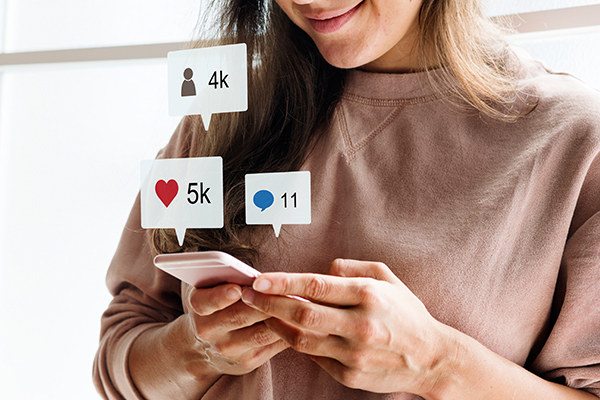
Online Visibility: Digital and social media presence is a long game. It’s about building relationships and being visible in front of your customers wherever they are.
Personal Website
There are a few rules behind that. One, you don’t want to do it every day. It’s not a social media platform. Two, you want to use it strategically. Whatever you’re posting, make sure you’re driving it to the second most important place you need to be online is you need to have a website. There is a lot of discussion about having a website or not having a website. A lot of people think if you have social media, now you don’t need a website. The fact is you do. Even if it’s a simple single page, it’s another validator. It’s another place for the search engines to crawl, to find you. It’s a place to drive people to for information. People tend to say, “They don’t have a website, then are they the real deal?”
LinkedIn Profile
Quickly, one is a Google My Business page. Two is a website. As I was talking about content on Google My Business, if you write a blog or an article or you have something interesting or a program to share, you can post it on Google My Business and link it to your website. Another reason to have a website. One was Google My Business. Two was to have a website. Three, which you shared a little bit, is a very passionate topic of mine. You have to have a LinkedIn profile, like it or not. LinkedIn is more important than any other of the social media platforms. It doesn’t matter if you are in business or if you are just a person looking for a job. LinkedIn is the number one social media platform that people go to to check you out.
They go to LinkedIn more times first than going to your website or any place else. They check you out on LinkedIn, and then they navigate from there. As you can see, all of these things are starting to intersect because if you’re using LinkedIn strategically, you are driving people to your website. If you’re using LinkedIn strategically, people go there to check you out and learn who you are and what you do. All of these elevate you to the other side of visibility, which is search. I focus on the organic ways to increase your visibility. Search is a paid looking for you as opposed to knowing you. I also say on LinkedIn, you should create a business page and a personal page. The business page is a validator. The business page also provides added search.
They just added the aspect that you can publish an article on your business page. It used to be only on your personal page because people do business with people. What has happened by allowing that article on your business page? You can now share it to your personal page and, in turn, write original content there. If the article drives people to your website, LinkedIn doesn’t penalize you for going off the platform because you’ve written original content. Secondly, which is cool and valuable, is let’s say your article is a blog that you published on your website. Google may read the blog on your website and recognize that in search and add that to your search value, the same article, even if it’s verbatim, which is shocking to me. If you post that on your LinkedIn business page, Google reads that as a separate piece of content.
You didn’t use to be able to do that. You had to be very careful about sharing identical articles.
They want to say the content is different. What Google has discovered is that LinkedIn is the first place people go to that they are seeing that people are doing more on LinkedIn than ever before. Generally speaking, if you search yourself, your personal LinkedIn page will come up in the top two in Google. When LinkedIn added the opportunity to put articles on your business page, now that wasn’t the case before. That’s only new when they added to new functionality. Google recognized that it was going to generate more awareness.
In this day and age, if you’re not online, you’re not attracting customers.
For whatever the Google gods were thinking in the algorithms, they decided that that was okay to be another piece of content because they see it as a circular motion, keeping them in this universe. I don’t think LinkedIn realized that by putting your article on your business page and linking to your website or external platform, if you share the article on your personal page, you don’t get penalized for pushing them off the platform.
When I talk about an article, this is about content distribution, when you think about it. Lots of people do blogs and they put it on their website. It’s fine. Here’s an opportunity for you to take that blog created as an article on LinkedIn and share it as a piece of content off Google. Now you have multiple crawlers on that content and multiple ways for people to see your content.
For those like me who don’t share it on Google, but share it on YouTube, how does that translate since they are the same company?
Google loves Google. YouTube is owned by Google. Still share on Google. You can either share it if you do it, like a post and you can drive them to your YouTube channel because you can put the link in, or you can drive them to a printed piece. All of it is organic ways to drive your visibility. In fact, you probably know this, Juliet, but YouTube is the second largest search engine behind Google. You don’t think of YouTube as a search engine. You think of it as a video distribution platform. The reality is people are going on there, searching for things all the time. My husband used it to search to figure out how to change out our garbage disposal. It is the second-largest behind Google.
This is such an incredible story. We played golf with a sixteen-year-old kid and his father was with him. His father used YouTube videos when he was ten years old. Dad never played golf, but he taught his kid how to play golf. We were playing with a scratch golfer that was sixteen years old that learned to play from YouTube.
I’m not a golfer. You have to explain what is a scratch golfer.
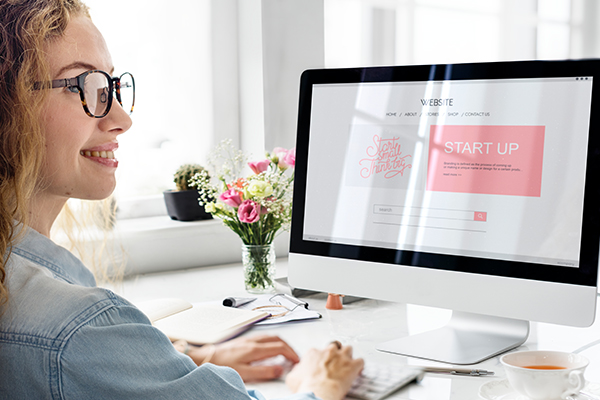
Online Visibility: A lot of people think you don’t need a website because there are social media. This is false, and you need a website. It’s another validator. It’s another place for the search engines to crawl to.
Scratch golfer means you’re at par. You’re shooting a 72, which is an extremely good score when you’re a weekend golfer. I golf more than just the weekends. To be able to look at videos and teach someone from the videos, we were blown away. We were surrounding dad, going, “Please, tell us which pros are you using on there?”
Everyone says you can either go to Google or YouTube to learn anything if you have the confidence to make an attempt. It gets back to why you need to have a Google My Business page. If we were going to add a sixth one, I would probably add YouTube, but not everybody does videos. One was the Google My Business page. Two was having a website. Three was LinkedIn.
Directories
The next one, you’ll be surprised, is many business owners, entrepreneurs and writers are members of organizations. I’m a member of multiple organizations. Some with pay, some are volunteers, but many of them have directories of members. You often have the ability to list yourself in the directory. You should be putting yourself in every directory that is available to you. If it’s paid through a networking group or free through a yellow pages system because it still exists online, every single one of those directories adds to your visibility value.
We have a networking group, which is where Juliet and I met, called The Dames. The Dames has a full directory in a closed directory to the general population, but Google still knows it exists. Google will still pull up people based on how you have listed yourself in the directory. If you’re looking for a visibility expert, I’m pretty sure my name is going to come up because that’s how I position myself or if you’re looking for somebody who can help you publish a quiz or a tool, I’m sure you’d come up, Juliet. Think about all of these organizations. Your alumni associations put your information into these directories. It’s one more piece of the pie that adds to your visibility and value.
I’ll share with you, readers, that anytime I’m a part of something like The Dames, I go through that and connect with those people over on LinkedIn, too. It’s not just you appear there. It’s you building a relationship with those people as well. I go back and do that with almost every group I’m a part of because I want to know who’s there. I want to know resources. I want them to be aware of what I do for referrals as well.
The other part of that is I know that you and I both have an appreciation for LinkedIn. The thing about connecting with people like that is we all have to remember it’s not about who they know. It’s about who they know exactly because you know. That’s how the word gets out. The oldest form of marketing and increasing your visibility is word of mouth. It’s not about who you know. It’s about who they know. Let’s leverage that.
LinkedIn is the most important social media platform when it comes to business.
Let’s back up with that a little bit, though, because being a LinkedIn expert, there’s a right way and the wrong way. I was going through my LinkedIn as I do every morning and I have messages from people trying to sell me stuff. It’s like, “I’m connected to you on LinkedIn.” I have 15,000 connections, “I’m probably not aware of you, but now your opening salvo to build a relationship with me was a sales pitch.” Can you talk about that a little bit?
It’s interesting and a dilemma when I talk and think about LinkedIn. A little backup. LinkedIn launched in the early 2000s after Facebook and in the position of the professional networking social platform. Everybody who joined at that point went on and uploaded their resume into their profile. From that time until 2016, LinkedIn was primarily all about finding a job. You built your page, left, and never came back until it was time to look for a job. Recruiters and HR professionals are using it.
In 2016, Microsoft bought LinkedIn and the game changed. At that point, they started refocusing the platform on being about content distribution. In 2017, a gentleman named Koka Sexton, one of the original LinkedIn team members, launched the concept of social selling. It’s using a social platform to sell your services or your products not like a door-to-door salesman, knocking on the door and not like cold calling.
The problem with the cold call pitch in your messaging started to emerge when LinkedIn introduced its navigator tool. It was built all on this premise of relationships. As LinkedIn has evolved over the last years, you know that much about it as building that relationship through the tool. Their navigator tools are paid platform where it identifies people who may fit your target audience.
People started using that the same way they used cold calling. It diminishes the value of LinkedIn. Enter 2020 with COVID. LinkedIn’s visibility escalated because, all of a sudden, everybody’s online. How are you meeting people? How are you connecting with people? That aspect exploded. I will say from my side, I have seen that start to curb, but what I would say is, unfortunately, you have to understand that that’s going to happen.
That’s when people don’t know how to use LinkedIn strategically, which is why I teach it because there is a right way and a wrong way of doing it. That’s why if you know how to use it correctly and you build that relationship through content, distribution, and engagement, you can easily move people into conversations and impact. LinkedIn promotes that through their paid platform navigator. They have about 6.2% conversion from connection to conversation, the methodology that I teach, which is all about that engagement. It’s a long tale.
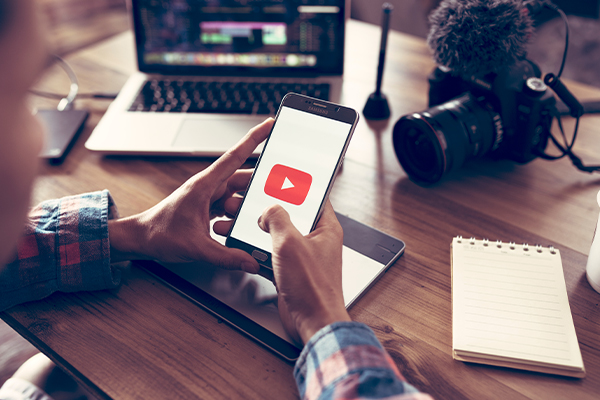
Online Visibility: YouTube is the second largest search engine behind Google. Some people don’t think YouTube is a search engine, but the reality is, people are searching for things there all the time.
It’s not, “I do it today and I have a customer tomorrow,” but it moves you from that into the conversation. Depending on the industry, it’s between a 15% and 25% conversation. I probably went off on a tangent because I love LinkedIn. The thing is that when you get those, you have three choices. You can ignore it. Sometimes I get snarky and say, “LinkedIn is about building relationships. Don’t come at me cold with a pitch.” Other times I might look at the pitch and say, “I’m interested. I might want to talk to this person.” Go into it with an open mind with the understanding that it’s going to happen. Don’t let that drive your opinion of how to use LinkedIn.
I’m pretty sure there’s somebody out there teaching the pitch with a who do you know because I’ve gotten a lot of that. Somebody with a cold call and who do you know at the end of it. It’s like, “I don’t know you. Why would I give you somebody?”
It teaches that when you are connecting, firstly, you should start if you’re building your network. Obviously, it’s people you know, people you’re in the same inner group with, or look at your second-level connections because they have a relationship with someone. Here’s the big thing. Unless it’s somebody you know or you’re in a group together, don’t put a message if it’s like a second-level connection. People have become immune to connections with messages because they think you’re pitching them. They’re much more inclined to accept your connection without a message.
We went down a little rabbit hole. We’ve got to get back to number five, but it was a good rabbit hole.
Online Reputation
Number five is important and that’s about online reputation. You need to generate online reviews. There is nobody that you will meet, nobody who’s listening, who has not looked at it to review online. If there’s somebody out there who has, then you can call me out on this, but I don’t believe there is. You need to generate online reviews. You can do it through your Google My Business page, LinkedIn, or Facebook. There are all sorts of ways of doing it, but you need to have online reviews because those that don’t have reviews, people say, “They’re in business, but nobody has anything to say about them.” You have to understand you’re going to have some good and some bad.
If you have a bad one, address it. Usually, there is something behind it, but generally speaking, if you look at reviews, there’s way more positive reviews and negative reviews. It’s easy to do when you are putting something out there. You can reach out to friends and say, “Would you put a review for me?” It’s still authentic even though you’re speaking to people that you know. On LinkedIn, you can go into the recommendation tool and request a recommendation there. You can put reviews on your website. You can ask through it through Facebook. You can do it through Google. I have my platforms of preference. When I’m done working with someone, I send a thank you and I include links. All they have to do is click on it and then do the review.
People do business with people, not companies.
I’m going to tell you a little secret that I do. All of mine are over on LinkedIn. I love it because when I used to do sales pages or something on my website, I would have to go searching around my computer. Do I have an image of them? If you use what’s over on LinkedIn, all you have to do is grab it. It has their name, title, picture, and it’s a backup. People can’t accuse you of faking reviews, which you and I both know people have done on their websites. It’s an easy way to keep all of your endorsements in one area.
It’s also a great way because that distribution opportunity exists there. I should practice what I preach here, but don’t lose sight of that. Try to ask for those recommendations regularly, like weekly or monthly. You want them to be fresh. You want to continue to replenish. That feeds back into your search as well.
I do try to do that after, but it’s hard sometimes to remember. You have to remember to do it while it’s fresh. I always talk about this with the quiz, when people finish your program and they’ve taken that quiz and seen how far they come. That’s the time to get it because they’ve just reviewed that they’ve spent the last six months growing and it was because of your help. I always feel like you have to get to it right away, so they don’t forget the experience they just had with you.
Since I do a lot of work on visibility and LinkedIn, it’s even more important that I do that because it’s reflective of your work.
Where do we find you if we want to find out more and figure out if we’d want to work with you?
Juliet helped me put together a great little tool called YourVisibilityFactor.com. If you go to that link, it will give you quick access to a three-minute assessment that covers the five places you need to be online and we’ll help you gauge how well you are showing up. You’ll get your visibility factor and know if you need to enhance where you need to enhance or if you are a rock star there. Juliet is great to work with and she did this quiz with me. I love it. Check it out. If you want to connect with me, you can email me at Benita@TheVisibilitySolutionsGroup.com or find me on LinkedIn at Linkedin.com/in/Benita-Samuels.
Thank you so much for being on.
Thank you, Juliet.
Important links
- @SuperBrandPublishing – YouTube
- www.PromoteProfitPublishQuiz.com
- Visibility Solutions Group
- Google My Business
- YourVisibilityFactor.com
- Benita@TheVisibilitySolutionsGroup.com
- Linkedin.com/in/Benita-Samuels
About Benita Samuels
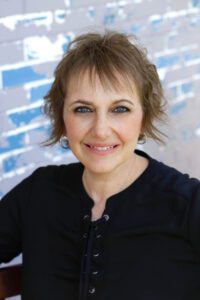 As a visibility expert, Benita Samuels has helped connect brands large and small with their digital and social media audiences, increasing their digital visibility and empowering them for ongoing success. Founder of Visibility Solutions Group, Benita promotes and speaks about the importance of being digitally visible. An early adopter and practitioner of digital and social media for business strategy, Benita brings a unique perspective to her audiences, having adopted “New Media” when it was new. Launching her career in New York City, Benita spent the early part of her career in corporate brand marketing, working with global brands including Nestle™ and Disney®, supporting privately-owned companies like Forbes Magazine Galleries and helping smaller start-ups launch and grow their brands digitally. As a strategic thought leader, Benita has overseen countless traditional and digital campaigns, from complex website development and social activations to integrated campaigns including corporate events and consumer promotions. Introducing S.Pellgrino™ Natural Sparkling Mineral Water to its social audience and identifying and connecting Playtex Baby with new mom’s during the nighttime feeding, are just a couple of brands she has helped become digitally visible to their audiences.
As a visibility expert, Benita Samuels has helped connect brands large and small with their digital and social media audiences, increasing their digital visibility and empowering them for ongoing success. Founder of Visibility Solutions Group, Benita promotes and speaks about the importance of being digitally visible. An early adopter and practitioner of digital and social media for business strategy, Benita brings a unique perspective to her audiences, having adopted “New Media” when it was new. Launching her career in New York City, Benita spent the early part of her career in corporate brand marketing, working with global brands including Nestle™ and Disney®, supporting privately-owned companies like Forbes Magazine Galleries and helping smaller start-ups launch and grow their brands digitally. As a strategic thought leader, Benita has overseen countless traditional and digital campaigns, from complex website development and social activations to integrated campaigns including corporate events and consumer promotions. Introducing S.Pellgrino™ Natural Sparkling Mineral Water to its social audience and identifying and connecting Playtex Baby with new mom’s during the nighttime feeding, are just a couple of brands she has helped become digitally visible to their audiences.
Today, Benita leads a team of independent category experts increasing the digital visibility for a broad array of clients. Promoting and speaking on the importance of being digitally visible and the power of LinkedIn, she reveals professional insights around the where, why and how of increasing your online visibility, including the 5 places to be online and why, and maximizing the power of LinkedIn as a vital tool for connection. Sharing her perspective and passion for LinkedIn with audiences globally, Benita has trained hundreds of business owners how to strategically leverage the platform to generate leads, shorten their sales cycle and grow their business. Whether increasing social traffic by 12x or moving your social connections to sales conversations, Benita openly shares real world tips and tricks that can dramatically increase your online visibility. Working with entrepreneurs, small business owners and executives, Benita is recognized among business professionals as a valuable resource in building customer relationships, crafting strategies that enable effective targeted communications and driving engagement to turn connections into conversations. Benita has a passion for sharing and Empowering Your Success.
Love the show? Subscribe, rate, review, and share!

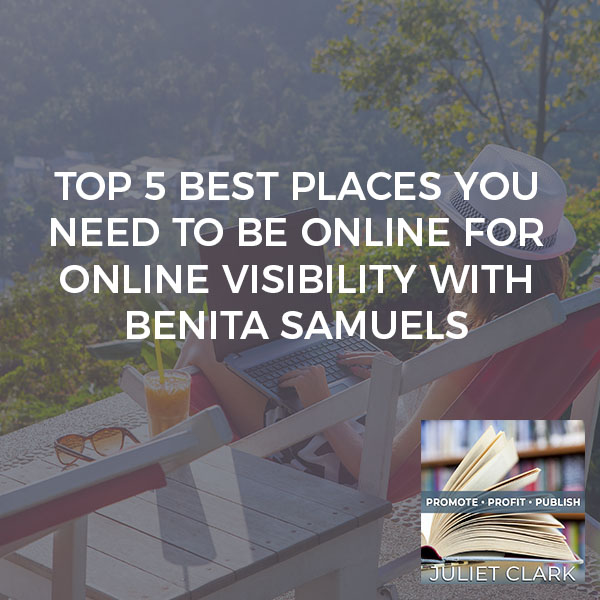


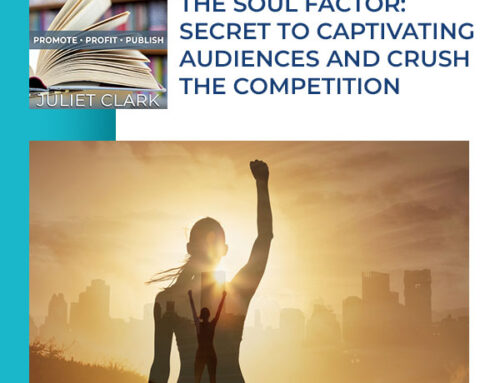
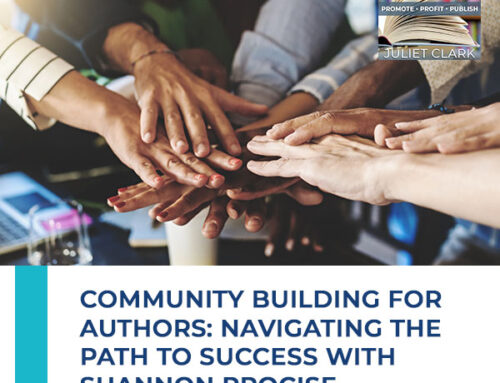
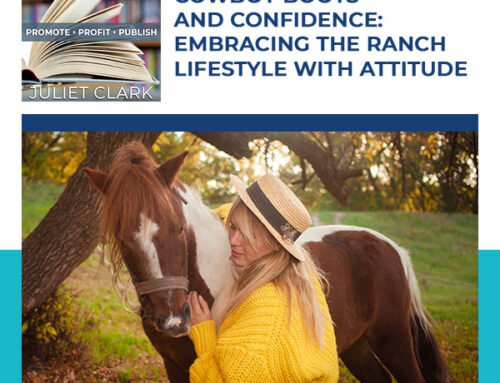


Leave A Comment